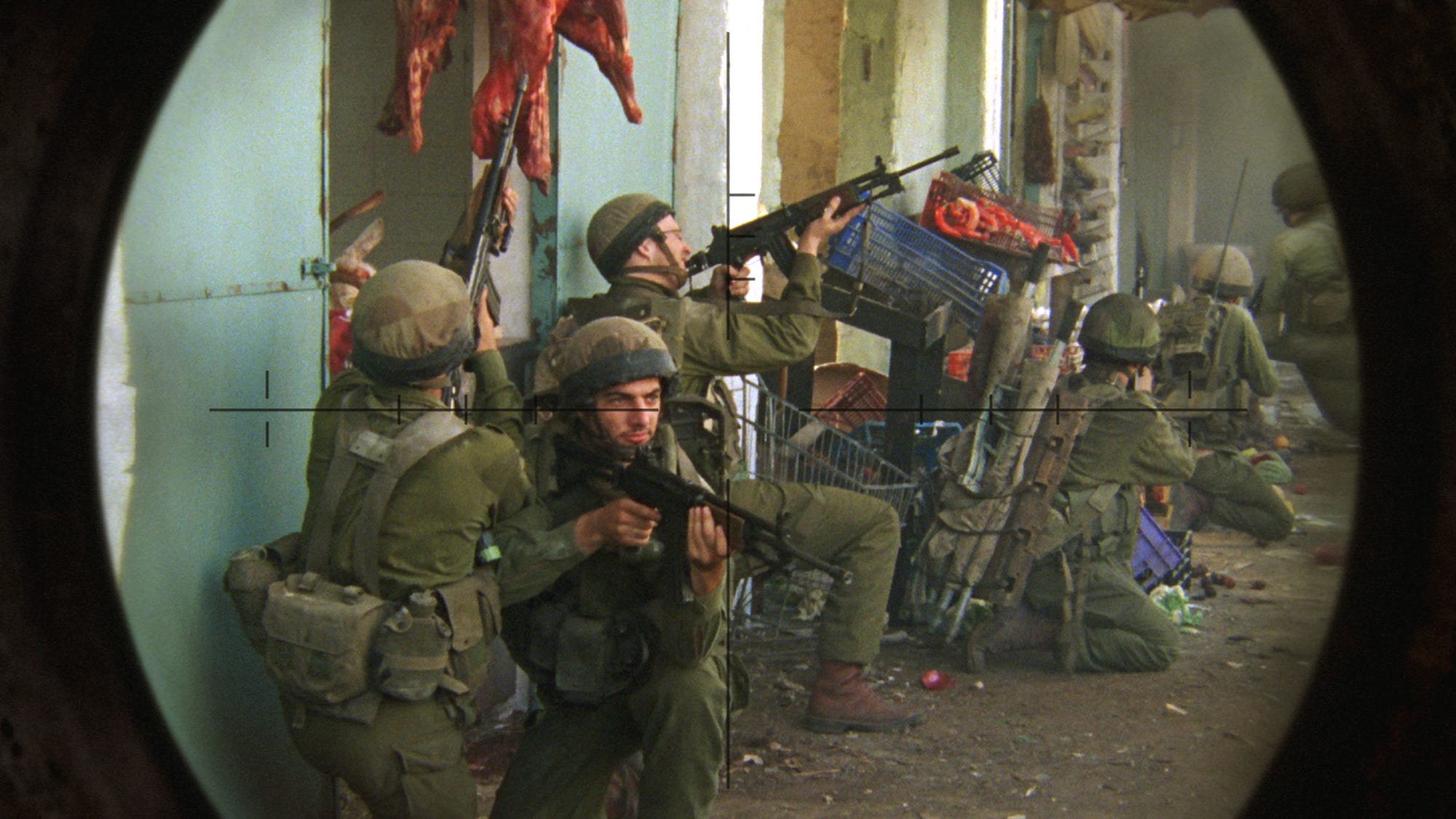2010 tank movie is intimate, realistic
Look, Fury is great. But it lacks something—the claustrophobia of combat in an armored vehicle.
What Fury was trying to achieve—the tension of being surrounded by combustible fuel and ammunition inside a lumbering metal behemoth—has already been done … and better.
In Israel four years ago.
Lebanon is the 2010 debut film from Israeli director Samuel Moaz. It depicts the crew of an Israeli Defense Force tank during the invasion of Lebanon in 1982.
The film is a realistic masterpiece comparable to Wolfgang Petersen’s World War II submarine movie Das Boot. Similarly to Das Boot’s inside-out view of warfare, in Lebanon the audience rarely sees the outside world other than through the many viewpoints from within the tank.
The top hatch opens at points to allow the accompanying infantry commander to bark at the tank crew, but it’s the gunner’s scope through which we view most of the action.
You could argue that this viewpoint lends the film a one-sided political bias. But this isn’t the case. Lebanon isn’t trying to show us a balanced portrayal of a conflict that has been called “Israel’s Vietnam.” It’s about one small group of men in a deadly situation.
It’s a snapshot of modern warfare.
The main characters are the four tank crew—the gunner, commander, driver and loader. The gunner is both the viewer’s connection to the action outside the tank and the crew’s moral compass.
The tank gets stuck in a Lebanese village teaming with enemy militiamen. Inside the vehicle, tempers fray.
The gunner messes up. He can’t take a crucial shot and this leads to the death of another Israeli soldier. In a powerful scene, we see—through the gunner’s scope—the consequences of his actions, as IDF medics struggle to save the soldier’s life.
There are few names, only nicknames and code names. “Rhinoceros” is the tank crew. The infantry team is “Cinderella.” The tank crew’s destination is “Saint Tropez,” a hotel where they are to rendezvous with other IDF units.
Replacement names with code names has the effect of divorcing the tank and its crew from the conflict raging all around. It’s never really clear to them—and to the viewer—why they fight.
If not for the title, the film could be set during any of the wars in the decades-long Arab-Israeli conflict.
And this is what makes Lebanon such a masterful work. It can be transplanted into any of the clashes between Israel and its neighbors since 1980.
Personal horror
Moaz’s film is a personal response to the trauma that he witnessed serving as a gunner in an Israeli tank during the 1982 war. It’s as if he’s inviting the audience to peer through the same viewfinder through which he viewed the war.
Incidentally, the gunner does have a name—Schmulik—which was Moaz’s own wartime nickname.
Speaking to The New York Times shortly after the Lebanon’s release, Moaz said that making the film was a cathartic experience, at least partially. But he still thinks about the war every time he gets up in the morning and every time he goes to bed.
“I wish it were that simple,” he said, “just to have nightmares—that would be an easy thing to buy.”

No comments:
Post a Comment